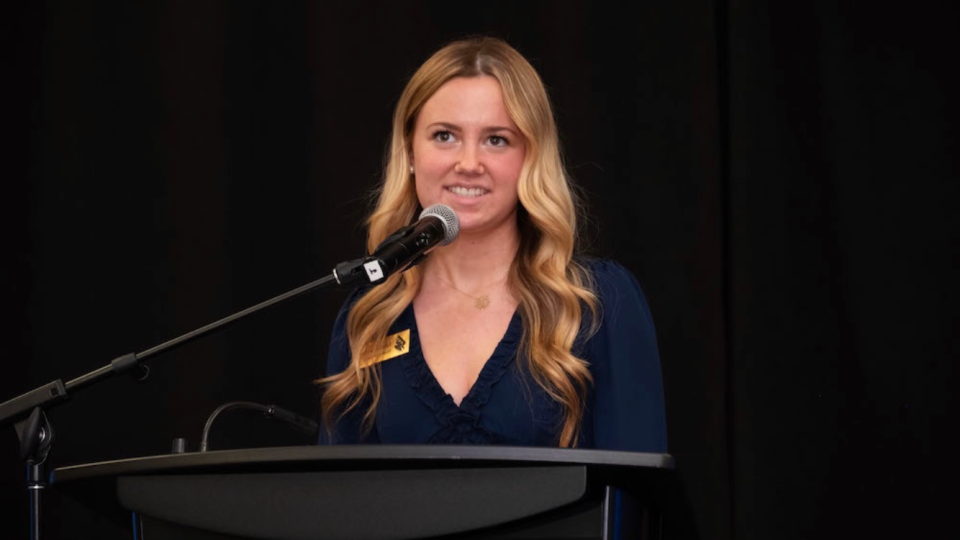Generation chronically online: my take on high schoolers' TikTok bubble
You may have been hearing about TikTok being banned, China spying on us through it, or government officials being asked to delete the app from their phone. What's maybe not in the headlines right now is the almost chronic use of TikTok by teenagers. Teenagers spend anywhere from one, two, five, or six hours a day, every day on this addictive app.
TikTok is a social media mobile app, like Facebook or YouTube, on which anyone can post short videos ranging from a few seconds to a few minutes long. Users post videos (called TikToks) of themselves dancing, doing makeup, making art, discussing politics and almost anything else imaginable. But no one’s feed is alike; each is programmed and curated to every individual and inspired by previous engagement with other posts.
Among Gen Z, TikTok is an integral part of life. Everyone has it, everyone is addicted to it, and it seems like everyone hates it.
The app’s algorithm makes it highly addictive. Most people I know spend hours on it each day but simultaneously talk of deleting the app. Personally, I’ve set an in-app timer for my usage, but I can’t seem to quit pressing the “ignore time limit” button. Like one would experience with any other addictive substance, teens just can’t seem to quit. As most trends originate on TikTok, high schoolers would feel out of the loop if they deleted the app.
There isn’t only a problem with the sheer uselessness of consuming strangers’ videos for hours a day − there is a problem with the videos themselves.
Before social media, a person could see maybe a few hundred people a day. Now they have the opportunity to see millions: every second, users can scroll to find another version of society's "beauty standard." The constant comparison between oneself and an onslaught of only the most beautiful is damaging for teenagers. This could be one of the reasons for the recent spike in depression in young girls.
The people posting these videos aren’t necessarily at fault. But some TikToks aren’t as innocent. Many “influencers” (famous social media users with an impressionable audience who post for a living) will edit their photos and videos to make themselves look prettier or thinner. So, viewers aren’t even jealous of something that is attainable.
Some video creators are even more at fault. Eating disorders are a hot topic on TikTok, and many creators play into this, milking the insecurities of young people. There is a genre of TikToks called “thinspo” (thin inspiration), which describes the kinds of videos in which people show their thin bodies to the camera. The ones making these videos, typically teen girls, likely have severe body image issues and are exposing their viewers to these issues. Viewers, inspired by the videos, often comment that they will “skip their next meal” or that they “don’t feel hungry anymore.”
Other TikTokers will flood the comment sections of these “thinspo” videos asking for a “trigger warning.” They want the creator to caption the video with “TW” and a colon, with a brief explanation of what words or visuals could be harmful for some viewers to watch, like the mention of eating disorders. But people then started asking for trigger warnings on videos where people aren’t even “body checking,” instead they are just skinny. People are asking for warnings on videos that could “trigger” their personal fears and phobias. It’s gotten out of hand. Not everything needs a warning and begging for one feels far removed from reality. The videos promoting eating disorders are certainly damaging, but even they don’t need trigger warnings — they need to not be posted in the first place.
The most active TikTok users have been labeled “chronically online.”
To be chronically online is to be so wrapped up in internet culture that you forget about the outside world. But the real world — it’s better than TikTok. Maybe there aren’t trigger warnings, maybe everyone has to confront their fears head on, but maybe it’s full of the safety of the ordinary. People aren’t edited and everything isn’t at its extreme. And, not maybe, but certainly, the real world pulls teens away from their lit screens in dark corners of their bedrooms.
TikTok is a headache-inducing place. Like most spaces on the internet, it is simultaneously a spot for creativity and community and a spot for bullying and insecurity. But I think Gen Z already has the answer. Be on the app less. Or, as many TikTok users say: “Go and touch grass.”
Tallulah Rector is a student at Palm Desert High School. Email her at rectorlulu@gmail.com

This article originally appeared on Palm Springs Desert Sun: Generation chronically online: on high schoolers' TikTok bubble

